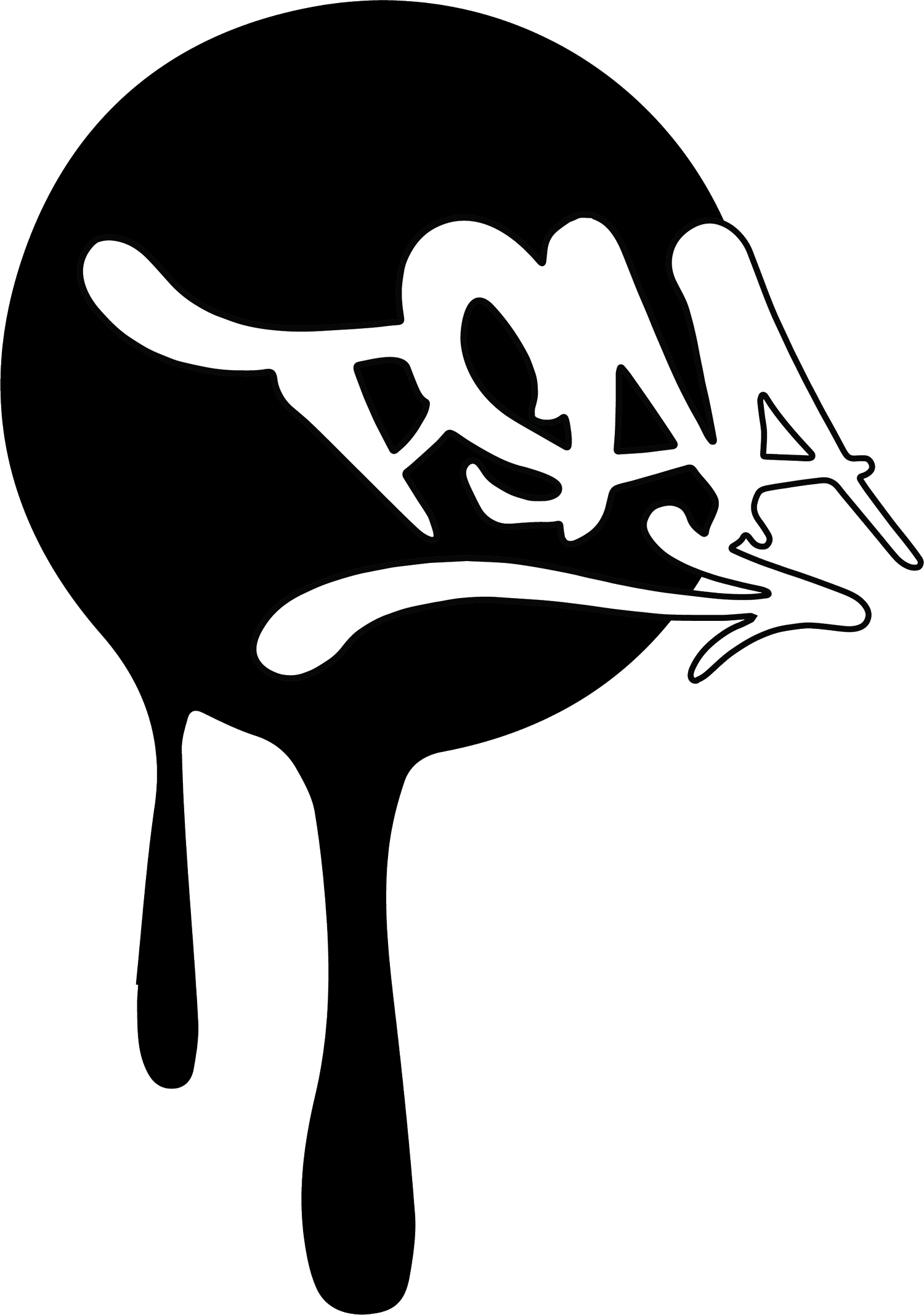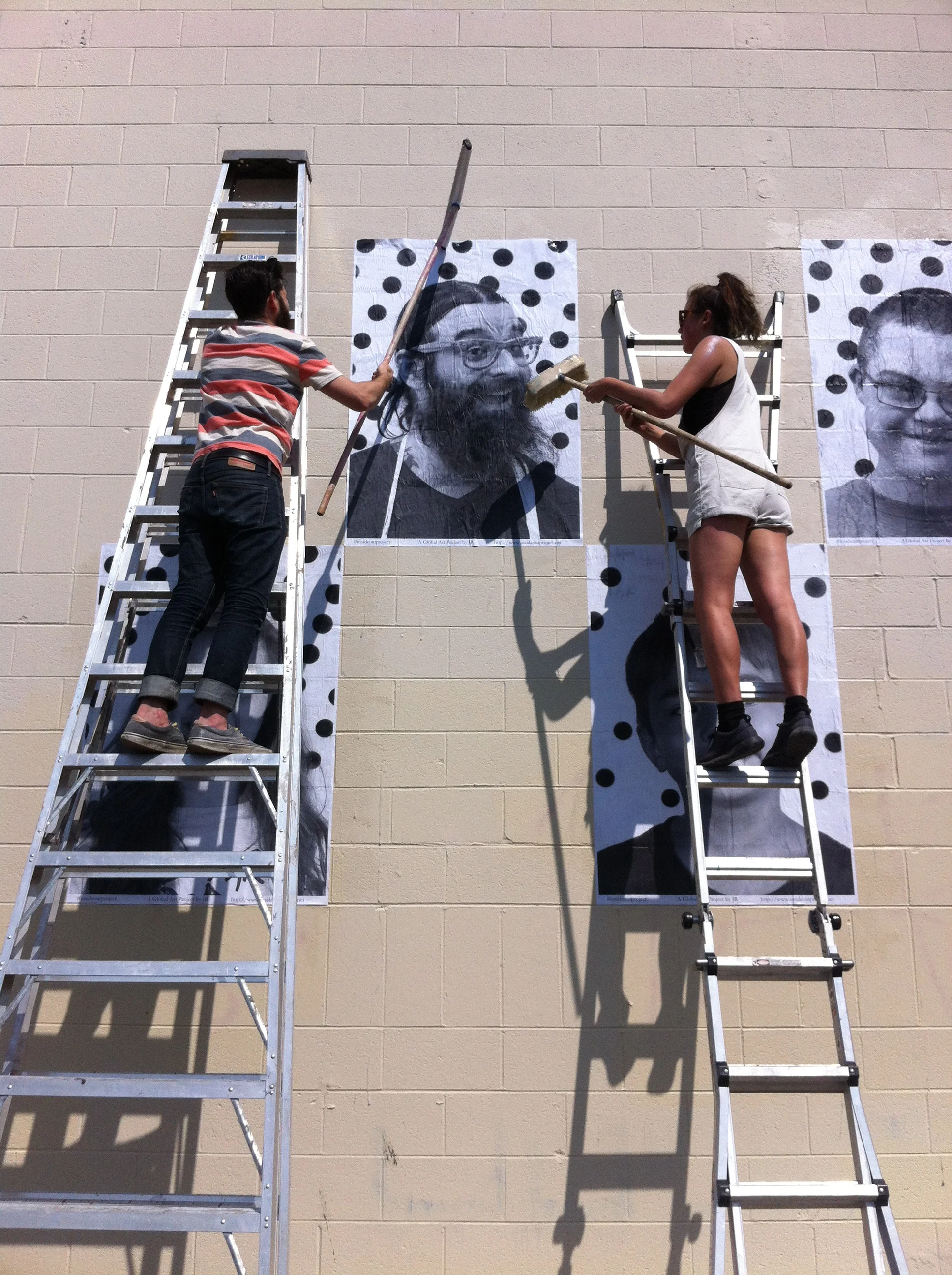Portland has been turned inside out! Alongside the train tracks of inner SE, a group of community members transformed the wall of K+F Coffee Roasters into a people’s public art gallery. One Grand, an art and design gallery in Portland, organized the city’s first JR Inside Out Project. The theme, “Keep Portland Weird.”
Inside Out is a global art project transforming messages of personal identity into works of art. The Steps: Organize a group, choose a theme, apply for the grant, and if accepted, take photos of people who live in the city based on the theme, send them to JR, who prints them out and sends them back. The project culminated with the community coming together to wheatpaste these portraits in public spaces around the city. These massive collages literally put a “human face” on the urban built environment. Projects like this get people to participate in public space in ways they may, or may not, have before.
It was great to see people wheatpasting for the first time, and really enjoying the process of being a part of this community action to alter the aesthesis of the city. One of those people was Anton Legoo, a local interaction designer. Anton spoke about the project’s effect saying, “it helped me to remember that we are all the same person wearing different disguises; hats, glasses, hair styles, facial expressions, social projections, genders, daily routines, hometowns, loves, and life experiences.”
Project organizer, Kali Huebner of the One Grand Gallery, explained that they wanted to bring JR’s Inside Out here to “to celebrate our landscape, our culture, and the individuals and ideas that make and shape this city. The goal was “to honor our appreciation for local business and craft, while bringing the community together to challenge our art scene and continue the discussion of street art and vandalism.”
The installation is on a factory building on SE 14th & Taggart. Located between the railroad tracks, a dead-end road, and the nearby former Brooklyn Skate Spot. This building has been a favorite for local graffiti artists for many years. This is a hidden space “in-between.” It’s a tucked away spot, slightly out of sight from the flow of traffic, a space creative and unmediated creative exchanges between people and their environment can more easily happen without fear of harassment or arrest.
It will be interesting to see how the City reacts to this project and how it evolves over time. Will the building still be a graffiti spot? Is this the start of a wheatpaste wall like Seattle’s Post Alley? Will Portland’s graffiti abatement issue a citation? The Brooklyn neighborhoodis rapidly changing with the new light rail construction surrounding it, so whatever happens, it will only be brief. When the development is complete, graffiti abatement will surely increase and all of this will most likely be wiped ‘clean’ like many other parts of this quickly gentrifying city.
The politics of the space extend past the official legalities, to the unofficial laws of the street. Some in the street and graffiti art community see this project as a mass replication that limits their access to few spaces where it is still somewhat possible to paint without extreme risk of being arrested. Wheatepaste is sometimes looked down upon by graffiti and other street artists because, in some cases, they see it as being less creative (it is not necessarily ‘made by hand’) and daring. Modern printing and copying technology, and the popularity of the OBEY campaign, has popularized this medium over the past few decades. Wheatepaste is also thought to be problematic from a graffiti writer’s perspective because it interferes with the quality of their work. Spray paint will quick wash away if it’s applied over wheatpaste and the texture is difficult to work around. An aerosol piece can paint on over and over again, but once a wheatepaste is applied to a wall, it makes that canvas less desirable for paint interventions and more desirable for more wheatepaste interventions.
To us, all of these forms have equal merit; both have examples that display unquestionable artistic skill and/or social commentary. Take for instance N.O. Bonzo, a local street artist who spends month’s intricately painting home-made paper with home-made ink, creating truly epic wheatpastes. Or, on the other hand, a graffiti writer who refines and plays with their hand-style over decades, constantly is remixing its elements.
We believe that street art, in all its forms, is the defining modern aesthetic of our time and a powerful community organizing tool. In the end, we hope this project makes us question: what does it mean to have an active role in our environments and communities? This project helps show the City of Portland that there are many benefits to allowing more street art and letting people directly participate in their city space. One of the most powerful aspects of Inside Out is that everyone can participate; it is truly the “people’s” art project.



